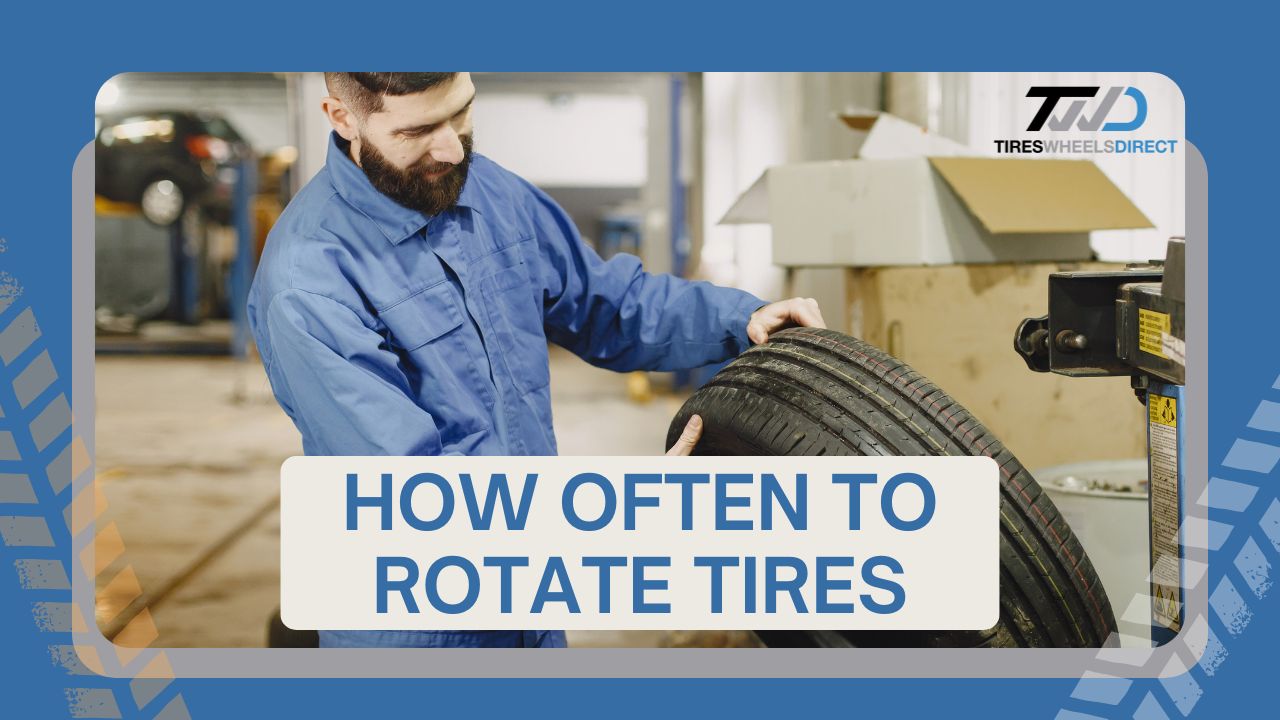How Often to Rotate Tires: Your Complete Guide to Safer Driving

Ever notice how some people’s tires seem to last forever while yours wear out fast? Here’s the secret they know. Regular tire rotation makes all the difference. Seriously, it’s like giving your tires a fair chance at life. So, what is the exact frequency for tire rotation, like How Often to Rotate Tires? It is time to explore the very basic but still effective method that lets the owner save some cash and still stay safe while driving. The tires on your vehicle are actually wearing unevenly. The front ones steer and often brake harder. Your back tires just follow along for the ride. Without rotation, some tires work overtime while others barely break a sweat. That’s where smart rotation comes in. It’s like rotating players in a game so everyone gets equal playing time. In this guide, we will talk about How Often to Rotate Tires and where to buy best tires for your vehicle. Let’s dive in and make sure your tires are working their best for you.
Table of Contents
ToggleWhy Tire Rotation Is Important?
Your tires are basically like your car’s shoes. And just like shoes, they wear differently depending on how you use them. Front tires handle steering, braking, and often acceleration too. They work much harder than rear tires. This means they wear out faster in specific spots. Here’s what happens without rotation. Your front tires develop bald spots on the edges from turning. Meanwhile, your rear tires stay pretty fresh. Eventually, you’ll need to replace just two tires instead of getting a full set. But here’s the problem. Mixing old and new tires creates handling issues. Your car might pull to one side or feel weird in turns. Regular rotation solves this headache completely. Every tire gets time in every position. They all wear evenly and last much longer. You’ll replace all four tires at once, which actually costs less than buying pairs separately. Plus, your car handles better with evenly worn tires. Proper rotation prevents most tire failures before they happen. Your tires grip the road better in rain and snow when they wear evenly.
How Often to Rotate Tires? The Golden Rule
How often should you rotate your tires? A simple answer would be that you should do it every 5000 to 7500 miles. That’s it! Most tire shops agree this works great for normal driving. Not too often, not too rare. Want a super easy trick to remember? Do it every other oil change. Most people get oil changes every 3000 to 5000 miles. So every second time, just ask for a tire rotation too. Simple routine that works. Some things might change this timing, though. Drive mostly on highways? You can wait until 7,500 miles. Highway driving is easier on tires. But if you do lots of city driving with stops and starts, stick to 5,000 miles. All that braking wears tires faster. What about special tires? Some fancy performance tires need different care. Check your car’s manual for the right schedule. A few high-end tires can’t be rotated at all. They are made for specific spots only. Hot weather matters too. Hot places and bumpy roads are tough on tires. Live somewhere super hot or with bad roads? Rotate every 5000 miles to be safe.
Different Tire Rotation Patterns That Work
Different cars do not necessarily share the same tire rotation pattern. To find the right one, it is important to consider your tire type and drive system. Now explain the most common rotation patterns that will work. For front-wheel drive cars, use the forward cross pattern. Move the front tires straight back to the rear. Then cross the rear tires to the opposite front sides. Therefore, the car’s back left wheel becomes the front right wheel, and the back right wheel is switched to the front left. This pattern works because front-wheel drive cars wear the front tires much faster. Rear-wheel drive cars need the rearward cross pattern. It’s the opposite. Move the rear tires straight to the front. Cross the front tires to the opposite back sides. This accounts for how rear-wheel drive systems stress the rear tires more. All-wheel drive vehicles should use the X-pattern. Cross all four tires diagonally. Front left goes to rear right. Front right goes to rear left. Rear left goes to front right. Rear right goes to front left. This pattern works because all-wheel drive systems wear all tires pretty evenly. Some tires are directional, meaning they only roll one way. These tires have arrows showing the rotation direction. You can only move directional tires from front to back on the same side. Never cross them to the opposite side, or you’ll install them backwards.
Signs Your Tires Need Rotation Right Now
Your tires talk to you when they need help. You just need to know what they’re saying. These warning signs mean rotate immediately, no matter how many miles you’ve driven.
Check Your Tread Depth
This is the easiest test ever. Grab a penny and stick it into your tire tread with Lincoln’s head pointing down. Can you see the top of Lincoln’s head? That spot is getting bald and needs attention. But here’s the important part. Don’t just check one spot. Test different areas on each tire. If one section looks much more worn than others, your tires are screaming for rotation. This simple penny test takes two minutes but saves you hundreds of dollars.
Look at Tire Edges
Check the shoulder edges of your front tires first. These edges do all the hard work when you steer. They wear down faster than the middle part. If the edges look much more worn than the centre rotation time has come. This edge wear happens super fast if you take corners hard or your wheels aren’t aligned right. The good news? Catching this early and rotating can even out the wear before it gets too bad.
Feel for Vibrations
Has your car gone from smooth to bumpy without warning? One of the side effects of uneven tire wear is the shaking that will be felt either through the steering wheel or the seat. So, if going from comfort to chaos becomes your trip, looking at the tires is the fastest way to solve the issue. A simple rotation is the answer to the problem in most cases. The reason for the vibration is that the flat spot of the tire or the wear on the tire is uneven. By rotating that tire, you are moving it to a place where it is less critical, and your ride will be smooth again.
Where to Buy The Best Tires For Your Vehicle?
At TiresWheelsDirect, we stock premium tire brands from all the top companies. We’ve seen what happens when people ignore rotation schedules. That’s why we focus on selling the best tires that last longer with proper care. Our tire experts help you pick the right tires for how you drive and what you can spend. Need basic all-season tires for daily driving? We’ve got great options. Want high-performance summer tires for weekend fun? We have those too. Every tire we sell makes sense for real people with real budgets. Here’s what makes us different from other tire sellers. We don’t just hand you tires and say goodbye. We teach you how to get the most life from your purchase. When you buy from us, you get detailed care instructions. We explain exactly when to rotate, what to watch for, and how to spot problems early. Our tire selection focuses on brands known for even wear patterns. Some cheap tires wear weirdly, no matter how often you rotate them. We skip those brands completely. Instead, we carry tires that respond well to proper rotation. This means your investment lasts longer and performs better throughout its life.
Conclusion
To conclude, how often to rotate tires is not difficult, but it makes a huge difference in how long your tires last and how safe you are. Every 5000 to 7500 miles keeps your tires wearing evenly and lasting way longer. The small amount of money you spend on rotation service pays you back by making your tires last longer and handle better. Remember to watch for warning signs between rotations. Don’t let tire rotation become another thing you forget to do with your car maintenance. Make it part of your regular car care routine. Good tires with proper rotation can last 60000 miles or even more if you take care of them properly.

